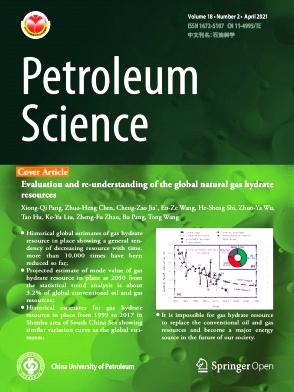Research on small molecule wetting agent for drilling fluids applied in Antarctic drilling engineering
IF 6.1
1区 工程技术
Q2 ENERGY & FUELS
引用次数: 0
Abstract
Antarctica contains numerous scientific mysteries, and the Antarctic ice sheet and its underlying bedrock contain important information about the geological structure of Antarctica and the evolutionary history of the ice sheet. In order to obtain the focus of these scientific explorations, the Antarctic drilling engineering is constantly developing. The drilling fluid performance directly determines the success or failure of drilling engineering. In order to enhance the poor performance for drilling fluids due to poor dispersion stability and easy settling of organoclay at ultra-low temperatures, the small-molecule wetting agent (HSR) for drilling fluid suitable for Antarctica was prepared by oleic acid, diethanolamine and benzoic acid as raw materials. Its chemical structure, properties and action mechanism were investigated by various experimental methods. The experimental results showed that 2% HSR could improve the colloidal rate for drilling fluid from 6.4% to 84.8%, and the increase rate of yield point was up to 167%. Meanwhile, it also made the drilling fluid excellent in shear dilution and thixotropy. In addition, 2% HSR could increase the density from 0.872 to 0.884 g/cm3 at −55 °C. And the drilling fluid with 2% HSR had a good thermal conductivity of 0.1458 W/(m·K) at −55 °C. This study gives a new direction for the research of drilling fluid treatment agents suitable for the Antarctic region, which will provide strong support for the scientific exploration of the Antarctic region.
小分子钻井液润湿剂在南极钻井工程中的应用研究
南极洲蕴藏着许多科学上的奥秘,南极冰盖及其下面的基岩包含着有关南极洲地质结构和冰盖进化史的重要信息。为了获得这些科学勘探的重点,南极钻探工程不断发展。钻井液性能的好坏直接决定着钻井工程的成败。为改善有机粘土在超低温下分散稳定性差、易沉淀的钻井液性能差的问题,以油酸、二乙醇胺和苯甲酸为原料,制备了适用于南极洲的钻井液小分子润湿剂(HSR)。采用多种实验方法对其化学结构、性质和作用机理进行了研究。实验结果表明,2% HSR可使钻井液的胶体率从6.4%提高到84.8%,屈服点增幅达167%。同时,还使钻井液具有良好的剪切稀释性和触变性。在−55℃时,2% HSR可使密度由0.872 g/cm3提高到0.884 g/cm3。在- 55℃时,含2% HSR的钻井液的导热系数为0.1458 W/(m·K)。本研究为研究适合南极地区的钻井液处理剂指明了新的方向,将为南极地区的科学勘探提供有力支持。
本文章由计算机程序翻译,如有差异,请以英文原文为准。
求助全文
约1分钟内获得全文
求助全文
来源期刊

Petroleum Science
地学-地球化学与地球物理
CiteScore
7.70
自引率
16.10%
发文量
311
审稿时长
63 days
期刊介绍:
Petroleum Science is the only English journal in China on petroleum science and technology that is intended for professionals engaged in petroleum science research and technical applications all over the world, as well as the managerial personnel of oil companies. It covers petroleum geology, petroleum geophysics, petroleum engineering, petrochemistry & chemical engineering, petroleum mechanics, and economic management. It aims to introduce the latest results in oil industry research in China, promote cooperation in petroleum science research between China and the rest of the world, and build a bridge for scientific communication between China and the world.
 求助内容:
求助内容: 应助结果提醒方式:
应助结果提醒方式:


